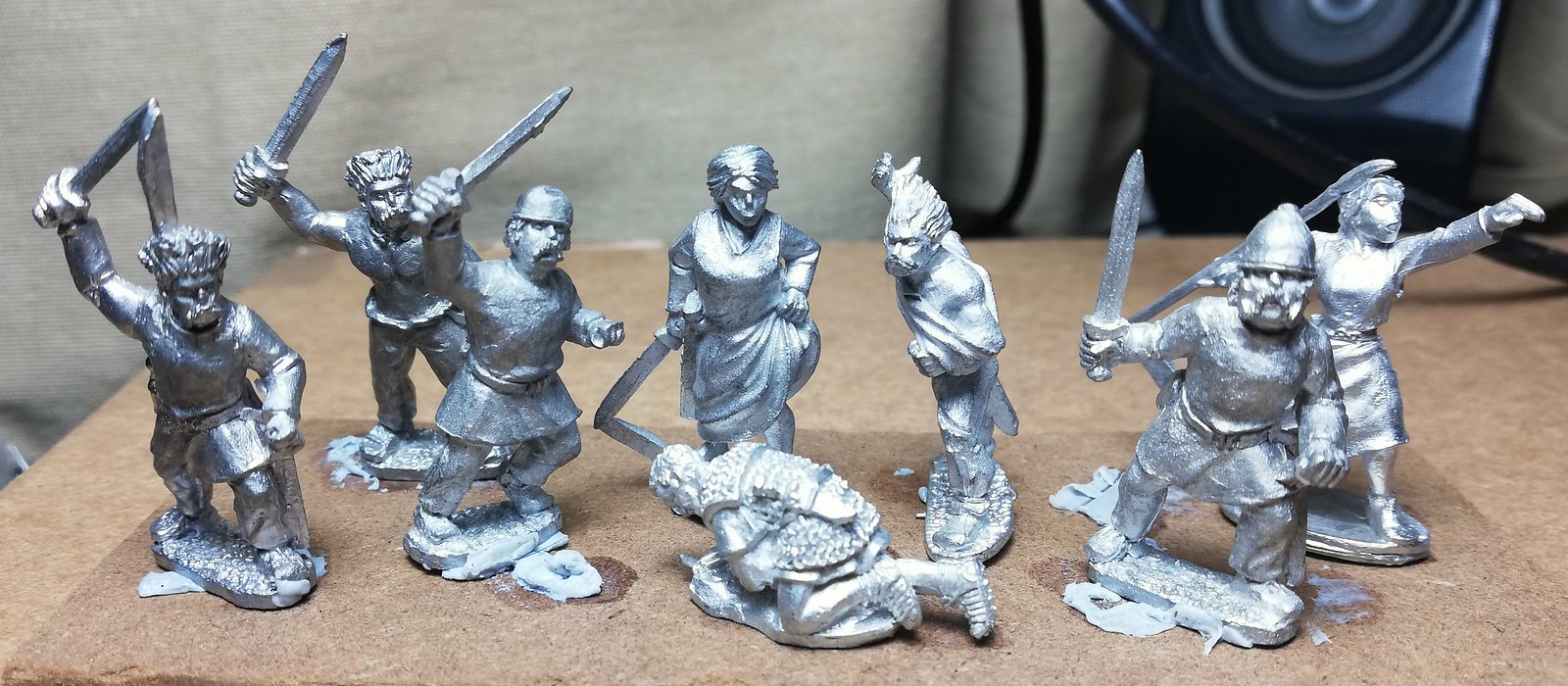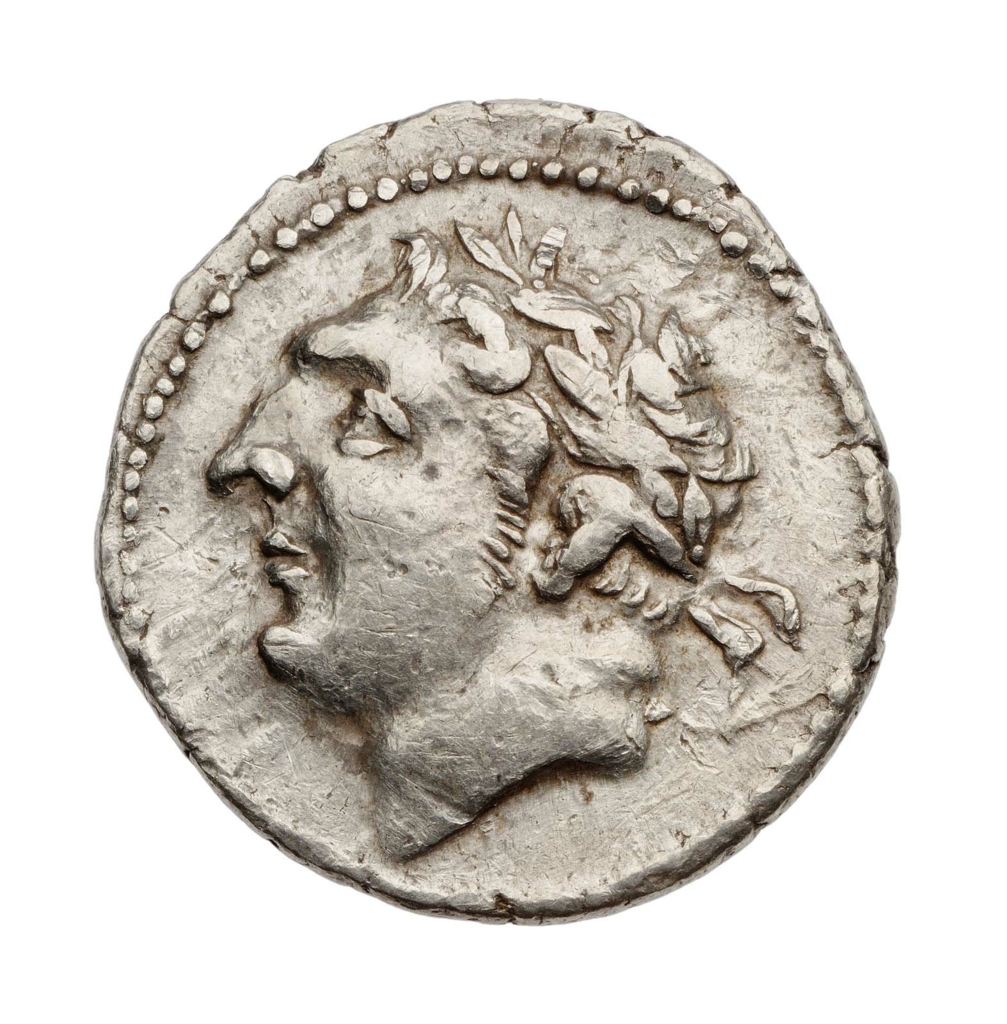It's not strictly necessary to calculate troop to figure ratios in order to have a good game. But, for a scenario to broadly conform to historical conditions, for opposing armies to be appropriately scaled to each other, and for that scale to fit to your playing area, it helps to work out troop ratios based on historical accounts.
Working troop ratios and dimensions is also helpful for planning your purchases. In my case, a lack of clear planning of unit dimensions led me to collect too many figures. Luckily with a Carthaginian army the component nationalities are readily used for other army projects.
Below is an example based from the Second Punic War.
CARTHAGINIANS
The battle of the Trebia, 218 B.C. offers a good starting point for building a Hannibalic Army for the Second Punic War. It also offers roughly equal sizes for the Carthaginian and Roman forces, around 40,000 troops each.
Following the all cavalry clash of the Ticinus, the engagement at Trebia was the first pitched battle between the Carthaginians and Romans after Hannibal crossed the Alps.
After the arduous Alps crossing, Polybius (III.56) says that Hannibal's army contained 12,000 African and 8,000 Iberian infantry, with not more than 6,000 cavalry. After the victory at the Ticinus, the Celts joined in large numbers.
By the time of Trebia Hannibal's troops numbered 20,000 heavy infantry (Africans, Iberians, and Celts), 8,000 light infantry (mostly African and Iberian, including Balearic slingers) and over 10,000 cavalry. In addition, his brother Mago commanded an ambush force of 1,000 Numidian cavalry and 1,000 picked infantry.
The additional 9,000 infantry at Trebia beyond the 20,000 combined heavy and lights just after the Alps must be credited to the Celts, as must 5,000 horse. It is likely that the Celts had few skirmishers.
This gives a total at Trebia of 29,000 foot and over 11,000 horse.
Borrowing from the analysis of Trebia in
Lost Battles, with some modifications to reconcile the totals listed after the Alps and at Trebia, this breaks down into:
21,000 Heavy Infantry
9,000 African
6,000 Celts
6,000 Iberian
8,000 Light Infantry
3,000 Celts (including Ligurians)
2,000 African (Libyan)
1,000 Moors
1,250 Iberian
750 Balearic
11,000 Cavalry
5,000 Celt
3,000 Numidian (light)
3,000 Iberian
~30 Elephants
In order to translate this to the tabletop for practical play we apply a scaling factor to the above numbers to get a reasonable headcount for the number of figures needed for an eight foot-wide game.
Following Hail Caesar's recommended unit sizes I am using 16 man standard units, 8 man small units (typically skirmishers and lights) and 12 man standard cavalry and 6 man small cavalry. Celt warbands and the like are 20 men strong.
Employing a ratio of 1 figure to 150 historical troops, with some rounding off involved, breaks the above numbers down into (number of models in brackets):
Heavy Infantry - 9 units
4 standard African units (64)
2 standard Celt warbands (40)
3 standard Iberian units (48)
Light Infantry - 6 units
1 standard Ligurian unit (16)
2 African small units, skirmishers (16)
1 Moorish small unit, skirmishers (8)
1 Iberian small unit (8)
1 Balearic small unit, skirmishers (8)
Cavalry - 9 units
3 standard Celt units (36)
4 small Numidian units (24)
2 standard Iberian units (24)
2 Elephants
26 units = 42.3% infantry, 15.4% skirmishers, 34.6% cavalry, 7.7% elephants
611 points (with a Ld 9 General)
Elephant numbers were determined by allowing one for every ten units in the army.
This produces a battle line of 9 heavy infantry with 3 cavalry wide on each flank. (Skirmishers and lights are arrayed in front of the heavy infantry line). A total of 15 base widths (160mm each), or 2400mm, just short of 8 feet.
A 6 foot-wide game could be accommodated by trimming the cavalry down to 1 base width per flank, to fit within 11 base widths.
I initially planned for a ratio of 1:80 but this produced a battle line that was too big, around 10' 6" wide, which would be okay for a very wide game, but would require a special gaming venue.
This actually makes my initial project much more manageable. I bought too many figures!
A quick comparison between the list derived above from a single historical battle and the generic Carthaginian 3rd Century B.C. list in
Hail Caesar Army Lists: Biblical & Classical shows quite different troop ratios.
The HC army list recommends that 66+% of an army's units should be infantry, excluding skirmishers (which can be up to 50% of the units), up to 25% cavalry, and up to 10% elephants.
Hannibal's actual army at Trebia was more cavalry-heavy, which is what allowed them to sweep away the Roman cavalry from the flanks in this and future battles. Even from the raw troop numbers cavalry amounted to 27.5% of the army, meaning that the Carthaginian army list in HC needs some revision for more historical play. I have one in the works and I'll get round to posting it later.
While an army list can be helpful for a generic game or figuring what types of units are in an army, as well as their game abilities, the army list cannot adequately replace an order of battle (ORBAT) derived from an actual historical encounter.
ROMANS
Polybius (III.72) claimed Sempronius's forces comprised:
16,000 Romans
20,000 Allies
4,000 Cavalry
Using a 1:150 ratio, the standard proportions of the manipular legion's components (a 1,200:1,200:1,200:600 ratio for velites:hastati:principes:triarii), and assigning the surplus numbers amongst the Allies to the hastati and principes, we get:
Roman Legions - 14 units
4 small velites (32)
4 small hastati (32)
4 small principes (32)
2 small triarii (16)
Italian Allies - 16 units
4 small velites (32)
5 small hastati (40)
5 small principes (40)
2 small triarii (16)
Cavalry - 4 units
3 small Allied cavalry (18)
1 small Roman cavalry (6)
34 units = 88.2% infantry, 11.8% cavalry
707 points (Ld 8 general)
If deployed in a checkerboard
triplex acies this works out to an infantry battle line of 9 standard base widths plus cavalry wings 2 base widths wide. A total of 11 base widths.
Sabin has voiced some skepticism about Livy's claim that the Cenomani Gauls served as Roman allies, but they can be accommodated by broadening the battle line to 12 base widths, still shorter than the Carthaginian one.
A note for Hail Caesar: there's been lots of debate about whether small unit Republican Romans are overpowered compared to standard units. This is apparent from the points value (HC assigns one point per stat value; higher points, higher stats). The ORBAT above can always be modified to feature standard infantry units.
Roman Legions - 9 units
4 small velites (32)
2 standard hastati (32)
2 standard principes (32)
1 standard triarii (16)
Italian Allies - 10 units
4 small velites (32)
3 standard hastati (48)
2 standard principes (32)
1 standard triarii (16)
Cavalry - 4 units
3 small Allied cavalry (18)
1 small Roman cavalry (6)
23 units
552 points (Ld 8 general)
(versus 611 points for the Carthaginian list above)
If you want to retain small unit manoeuvrability then a more elegant solution that Rick Priestley once recommended to me is to tweak the stats. The points difference between the small unit and standard unit Romans above are due to the fact that while unit frontage halves the unit stats decrease by only 18% (including the scaled cost for pila and Drilled).
In that case, downgrading the stats of the Republican Roman small units from heavy to medium infantry, from light infantry velites to skirmishers, as per the manipular legion under the Camillan Roman list from the Army book, produces an army of 637 points to the Carthaginian's 611.
For Trebia and most of the Italian Campaign the Roman troops arguably should not be more powerful than the Carthaginians. They could on occasion be penalised with a Ld 7 Consul. For a Trebia scenario one could consider further downgrades or penalties - such as a 1 point reduction to stamina - to represent the weaker morale of the Romans who failed to eat the most important meal of the day: breakfast.
Roman Legions - 14 units
4 small velites skirmishers (32)
4 small hastati medium infantry (32)
4 small principes medium infantry (32)
2 small triarii heavy infantry (16)
Italian Allies - 16 units
4 small velites skirmishers (32)
5 small hastati medium infantry (40)
5 small principes medium infantry (40)
2 small triarii heavy infantry (16)
Cavalry - 4 units
3 small Allied cavalry (18)
1 small Roman cavalry (6)
Stats based on the Camillan Roman list in the Biblical & Classical Armies book. All units have a -1 to stamina to reflect their fatigue from crossing the icy Trebia river and skipping breakfast.
603 points






















































